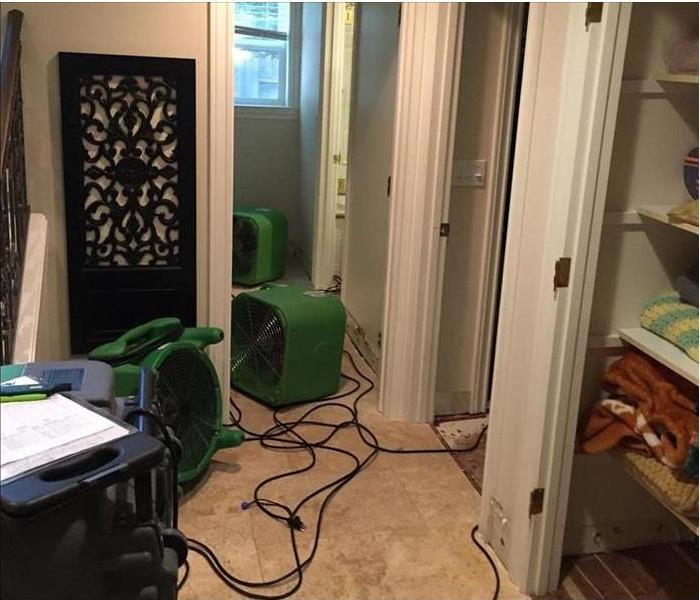What To Do With Flooded Carpeting
4/13/2022 (Permalink)
 The drying equipment we use at SERVPRO is top of the line in the restoration industry. Call us when you need it!
The drying equipment we use at SERVPRO is top of the line in the restoration industry. Call us when you need it!
What Should You Do With Flooded Carpeting?
After a pipe break or other water damage event in your Pleasanton, CA, home, there will be much to deal with. Soaked carpets are a major issue and can lead to mold growth if not addressed properly.
Composition of Carpeted Floors
If you decide to keep some or all of the flooring that has been affected by a flood, it is important to make sure the entire floor is fully clean and dry. The following are the three main components of a carpeted floor:
- Subfloor
- Padding
- Carpet
The subfloor is simply the flooring over which the carpeting is installed. The subfloor is often plywood, but can be concrete. The padding is the soft, foamy layer between the carpeting and the subfloor.
Drying Carpeted Floors
Simply drying the carpet is not enough to ensure mold growth and other issues won’t occur. A professional restoration service may be helpful in more severe cases, but in some situations you can dry the area yourself. If the flood water is clean, such as from a pipe break, you can keep the carpeting and the padding. If the water is contaminated, you will need to discard the padding and sanitize or replace the carpeting.
To ensure the whole floor is dry, pull up the layer of carpeting and check on the padding. If the padding has been wet for more than a day, it is a good idea to replace it as it may already be harboring mold. Otherwise, try using a wet/dry vacuum to suck up the moisture.
If you can’t get the padding fully dry, replace it. If the subfloor is also wet, the wet/dry vacuum may be able to extract much of the moisture. You can dry out the remaining moisture by running a dehumidifier or fan in the area. The carpeting itself can dry in the sunshine or with the help of a wet/dry vacuum.
Dealing with carpet after a pipe break or other water damage event can be tricky. Remember to act quickly to prevent mold growth and make sure everything is clean and dry before completing the restoration process.





 24/7 Emergency Service
24/7 Emergency Service